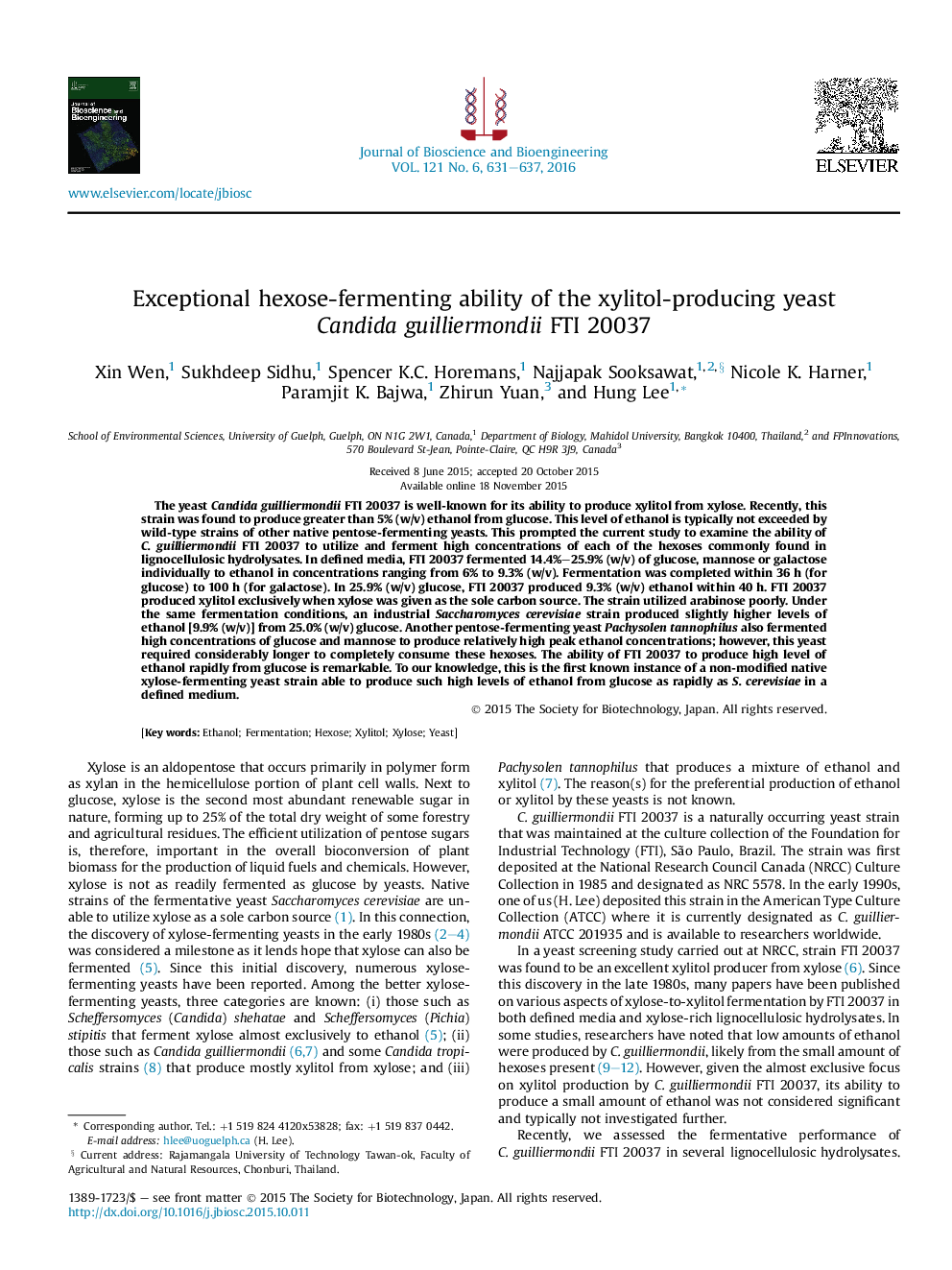| Article ID | Journal | Published Year | Pages | File Type |
|---|---|---|---|---|
| 20073 | Journal of Bioscience and Bioengineering | 2016 | 7 Pages |
The yeast Candida guilliermondii FTI 20037 is well-known for its ability to produce xylitol from xylose. Recently, this strain was found to produce greater than 5% (w/v) ethanol from glucose. This level of ethanol is typically not exceeded by wild-type strains of other native pentose-fermenting yeasts. This prompted the current study to examine the ability of C. guilliermondii FTI 20037 to utilize and ferment high concentrations of each of the hexoses commonly found in lignocellulosic hydrolysates. In defined media, FTI 20037 fermented 14.4%–25.9% (w/v) of glucose, mannose or galactose individually to ethanol in concentrations ranging from 6% to 9.3% (w/v). Fermentation was completed within 36 h (for glucose) to 100 h (for galactose). In 25.9% (w/v) glucose, FTI 20037 produced 9.3% (w/v) ethanol within 40 h. FTI 20037 produced xylitol exclusively when xylose was given as the sole carbon source. The strain utilized arabinose poorly. Under the same fermentation conditions, an industrial Saccharomyces cerevisiae strain produced slightly higher levels of ethanol [9.9% (w/v)] from 25.0% (w/v) glucose. Another pentose-fermenting yeast Pachysolen tannophilus also fermented high concentrations of glucose and mannose to produce relatively high peak ethanol concentrations; however, this yeast required considerably longer to completely consume these hexoses. The ability of FTI 20037 to produce high level of ethanol rapidly from glucose is remarkable. To our knowledge, this is the first known instance of a non-modified native xylose-fermenting yeast strain able to produce such high levels of ethanol from glucose as rapidly as S. cerevisiae in a defined medium.
